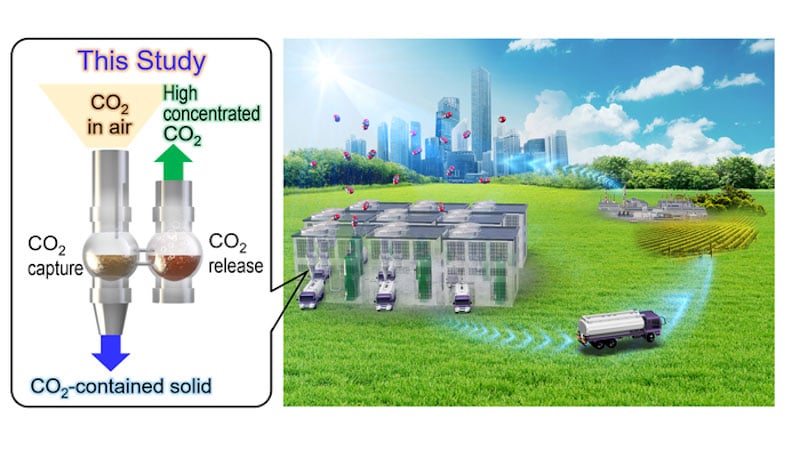The devastating effects of climate change are being felt around the world, with an urgent need for new technologies and lifestyles that will lead to reduced carbon emissions. Many scientists are looking for ways to reduce the amount of carbon dioxide we’ve already released into the atmosphere.
In a new advance, researchers from Tokyo Metropolitan University have developed a new carbon capture system that removes carbon dioxide directly from the atmosphere with unprecedented performance.
The new compound, Isophorone diamine (IPDA), in a “liquid-solid phase separation” system, was found to remove carbon dioxide at the low concentrations contained in the atmosphere with 99% efficiency. The compound is reusable with minimal heating and at least twice as fast as existing systems, an exciting new development for direct air capture.
Many direct air capture (DAC) systems involve bubbling air through a liquid, which can either absorb the CO2 or cause it to separate out into solid crystals or flakes. Liquid-solid phase separation systems offer an elegant solution where the reaction product is insoluble and comes out of the solution as a solid. There is no accumulation of the product in the liquid, and the reaction speed does not slow down much.

The team focused their attention on liquid amine compounds, modifying their structure to optimize reaction speed and efficiency with a wide range of concentrations of carbon dioxide in the air. In tests, they found that the IPDA could remove more than 99% of CO2 from the air with a concentration of 400 parts per million (ppm). They demonstrated that the solid dispersed in solution only required heating to 333 K (60 degrees Celsius) to completely release the captured carbon dioxide, recovering the original liquid.
The rate at which carbon dioxide could be removed was at least twice as fast as that of the leading DAC lab systems, making it the fastest carbon dioxide capture system in the world at present for processing low concentration carbon dioxide in the air (400ppm).
The new technology promises unprecedented performance and robustness in DAC systems, with wide implications for carbon capture systems deployed at scale. Beyond improving their system further, their vision of a “beyond zero” world now turns to how the captured carbon may be effectively used in industrial applications and household products.
New carbon capture system is 99% efficient and lightning-fast
Source: Tambay News

0 Comments